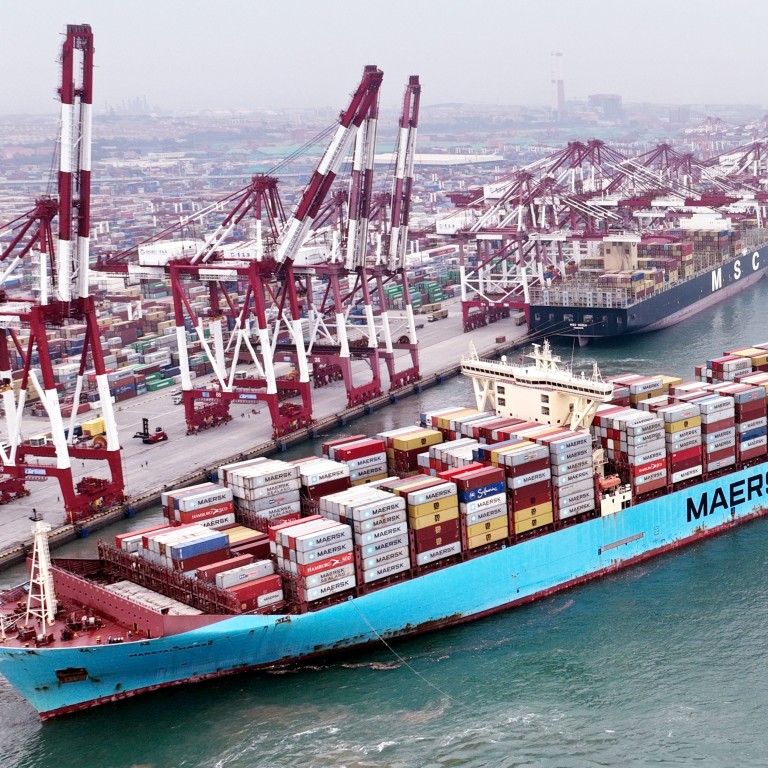
China trade: July ‘surprise’ as exports beat forecasts, but imports fail to catch up
- China’s total trade surplus hit an all-time high of US$101.26 billion in July, compared with US$97.94 billion in June
- Exports grew by 18 per cent last month from a year earlier to US$333 billion, compared to a 17.9 per cent growth in June
China’s export growth continued its rising momentum to beat expectations in July, but imports remained weak, sending the total trade surplus to a record high, latest official data showed.
The July figure was above expectations for a rise of 16.2 per cent, according to Wind, a leading provider of financial information services in China.
Imports, meanwhile, grew by 2.3 per cent year on year in July to US$231.7 billion, up from 1 per cent growth in June, but well below the expected 4.5 per cent increase.
This came as China’s total trade surplus hit an all-time high of US$101.26 billion in July, compared with US$97.94 billion in June.
Alicia Garcia Herrero, chief Asia-Pacific economist at French investment bank Natixis, said China “is not comfortable with a trade deficit” in such difficult times.
“The more reserves they can accumulate the better, for rainy days. Taiwan’s situation shows that sanctions on [Beijing] could come,” she added.
“[Foreign exchange] reserves do help in a grey area situation, which is where we are now, [and] exports help in that direction.”
Zhang Zhiwei, president and chief economist at Pinpoint Asset Management, was of the same view. Noting that China’s export growth “surprised again on the upside”, he said “the strong export growth continues to help China’s economy in a difficult year as domestic demand remains sluggish.”
The strong export data reinforces the government’s policy stance
China has ruled out excessive stimulus to boost growth as the economy faces the fallout of a zero-Covid policy and related curbs.
“The strong export data reinforces the government’s policy stance,” Zhang pointed out. “[It] helps boost confidence in the [yuan] exchange rate, which in turn helps to deter capital outflows.”
The Association of Southeast Asian Nations, the European Union and the United States remained China’s three largest trading partners in July.
With Russia, trade remained resilient in July and imports went up by nearly 50 per cent. Chinese exports to Russia rose 22.2 per cent year on year to US$6.77 billion, while import volume soared by 49.3 per cent to US$10 billion, the second highest after May’s record US$10.27 billion.
In volume terms, the customs data also showed that China’s imports of major commodities, such as grain, soybean, crude oil, natural gas and coal, fell year on year in July but the dollar-term purchase values all increased – a sign of the inflation impact.
The data basically confirms China’s push for self-reliance on the import side
The purchase of iron ore increased in volume terms, but declined in dollar terms.
On the other hand, Chinese exports of rare earths fell by 8 per cent in July from the previous year, to 3,637.10 tonnes.
“The data basically confirms China’s push for self-reliance on the import side. The recent announcement of limits to iron ore imports is a good example of that, but [it is] also supported by very weak demand,” added Garcia Herrero.
“On the export side, China wants to continue to increase market share, as much as possible.”

